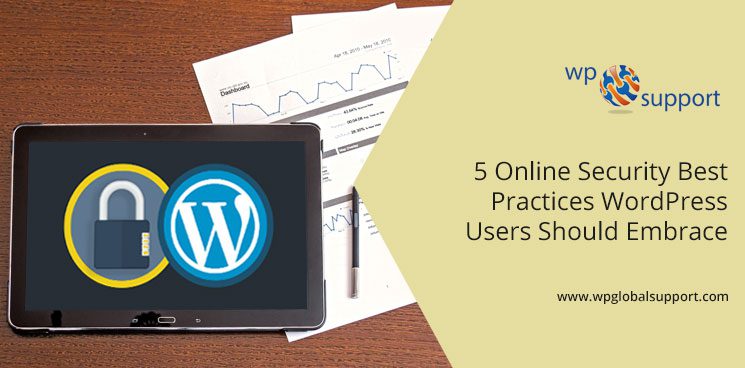

In today’s era, technological upgrades, digital commercialization, and new startups are popping up in significant numbers. To account for the new businesses, and the practices to make their reach far and wide, the path through online methods is the primary element. That is where the creation of a website comes as an utmost necessity in the current age where digital media is evolving at an unimaginable pace.
For this purpose, a platform that has developed substantially, where you can create and edit your website, WordPress ( a content management system), has become popular among considerable website content hosts. It helps in easy access to most of the tools that are required. This blog will provide the online security best practices for wordpress users.
However, this popularity has not only the other website developers but also hackers, to try out their luck. Just imagine what could be done if someone had your website in their hands. Bygone the reputation, imagine the amount of fraud that might occur with your brand’s website.
5 Online Security Best Practices for WordPress Users :
It is quite an undesired scenario, and you can easily prevent it by maintaining a secure background for your WordPress account. It could be by following Practices, some of which are listed below, that ensure its security and privacy:
Using an Encrypted Network
WordPress account stands vulnerable at logging in when you are connected to a not-so-secure wireless network. If you are connected to a public Wi-Fi such as that of a restaurant or mini bar, you invite malicious hackers to go through your devices. To get secured access, install a Virtual Private Network (VPN); it encrypts your data packets by providing an encrypted tunnel for the transmission of your information.
Creating Authentic and Strong Passwords
Out of the ways to get into your account, the easiest one is to penetrate through those accounts guarded by weak passwords. This is because the probability of breaking through is relatively easy. Thus you leave out your product’s website to be manipulated, due to negligence. However, to avoid this creating a strong password is always recommended. Even password managers could help with this by remembering the passwords for you.
Updating your WordPress regularly
When you skip an update or leave it with the older version, the chances that your account gets infected and affected by some Trojan or newly discovered virus are high. This hence, brings you back to the vulnerable zone, sweating over the data you are losing. A security plugin is your solution. To avoid this standard installation of the significant updates proves the best in regard solution.
Enabling a Web Application Firewall
When you are not sure of the threats posed, an improper security system could lead to malware crashing your website, and much more. It may crash your site, change your passwords, enable new permissions, and a lot more. The quickest manner is to allow a WAF to stay protected from such threats. It covers not only internal but also guarantees external manual threats.
Limit the Login Attempts
When you keep login attempts to infinity, it gives complete freedom to hackers for trial and error. It could increase your possibility of being hacked easily. Hence, limiting the login attempts to 3 is the generally advised number. If you are someone who forgets the password frequently, it is advisable to note them down somewhere or change it every time you log in. It is better than not keeping a limit to login attempts.
Conclusion
Having secure Login practices and keeping the vulnerability factors to the lowest is what the hour calls for. The advancement of technology will always have its pros and cons, and the benefits will be assured when you utilize the pros keeping in mind the cons, thus, preventing any mishap. Proper hygiene and website protection must be ensured. It will make the digital experience more fun and productive.
